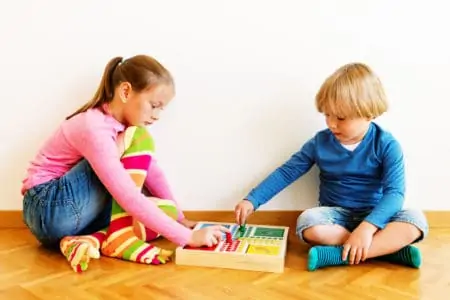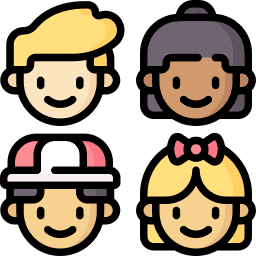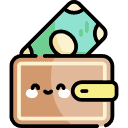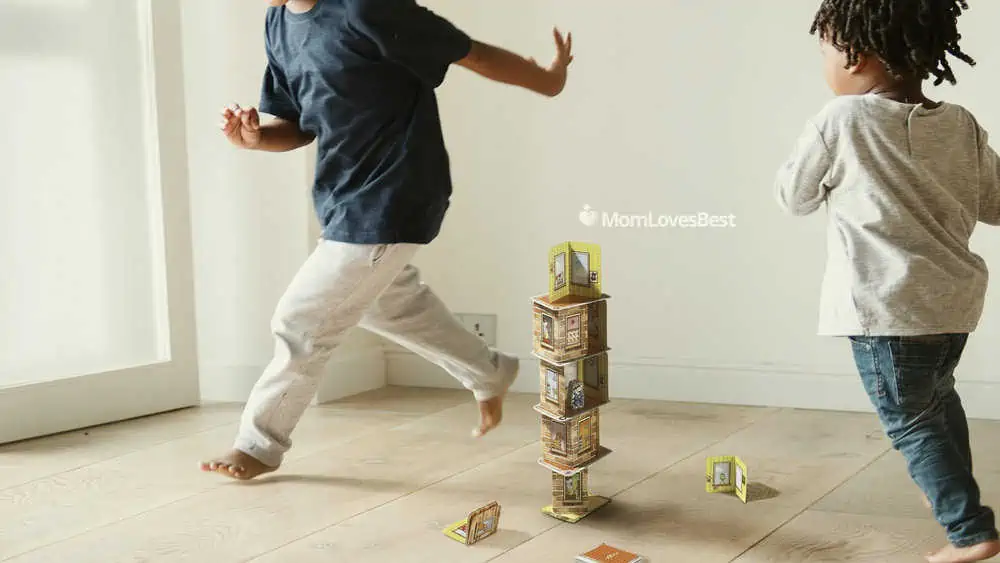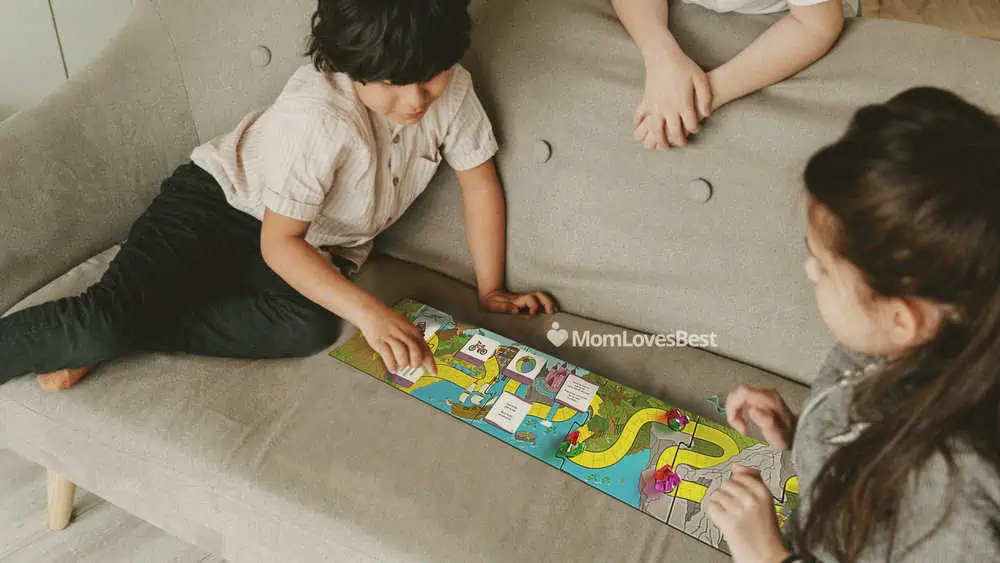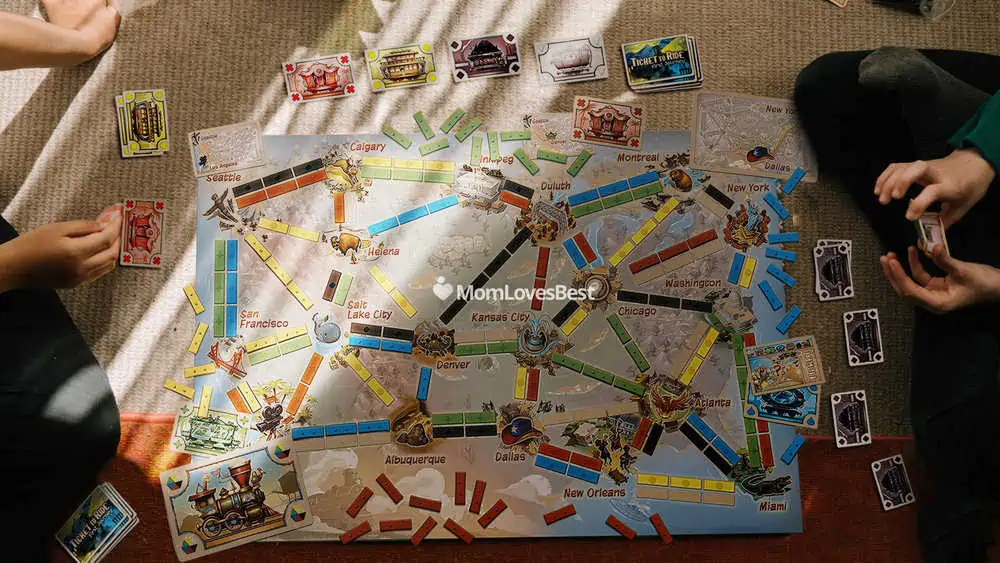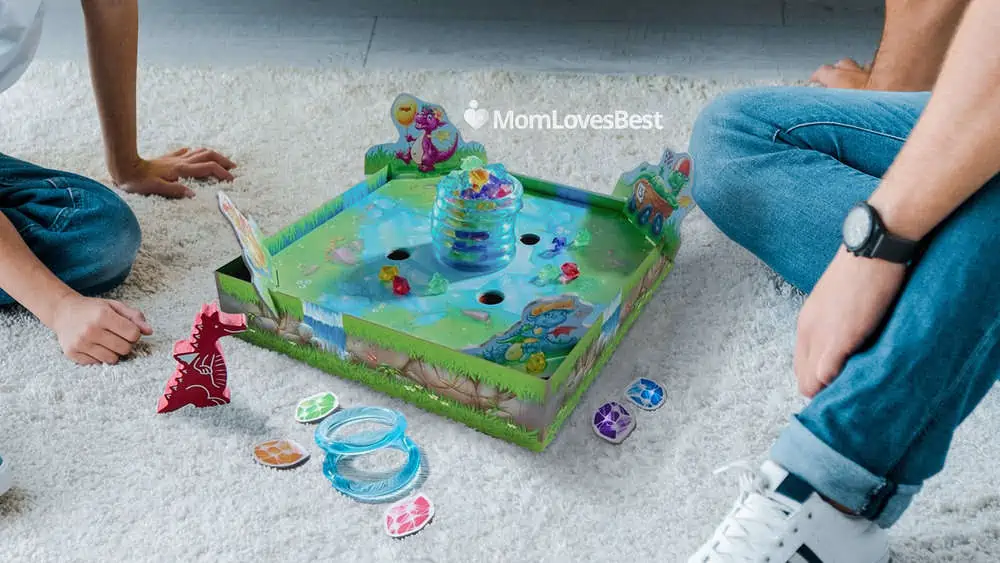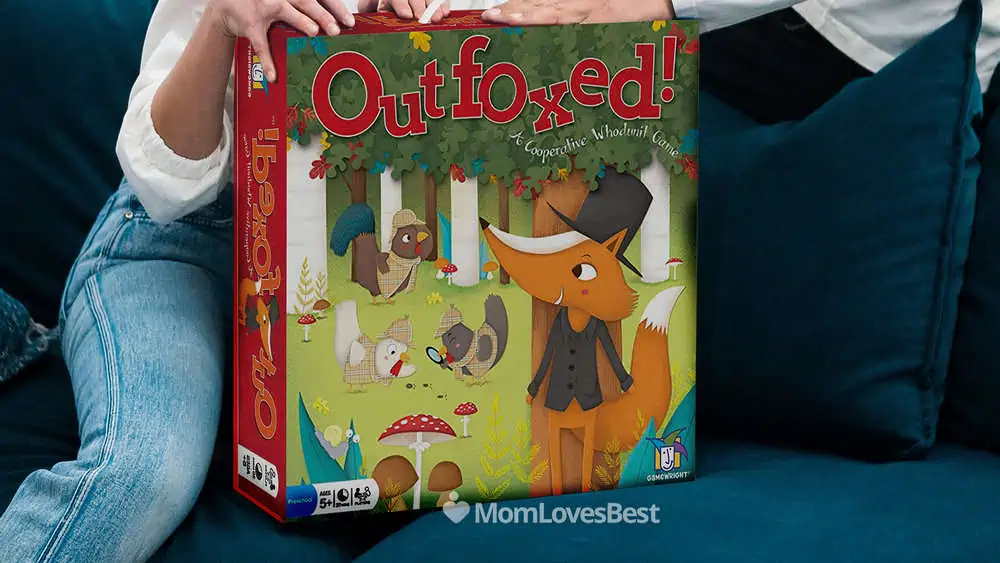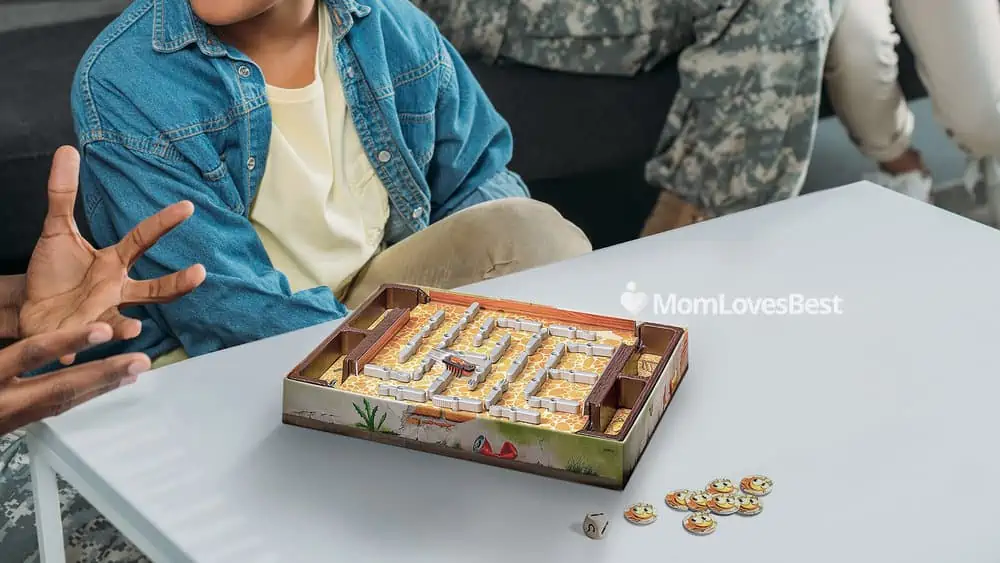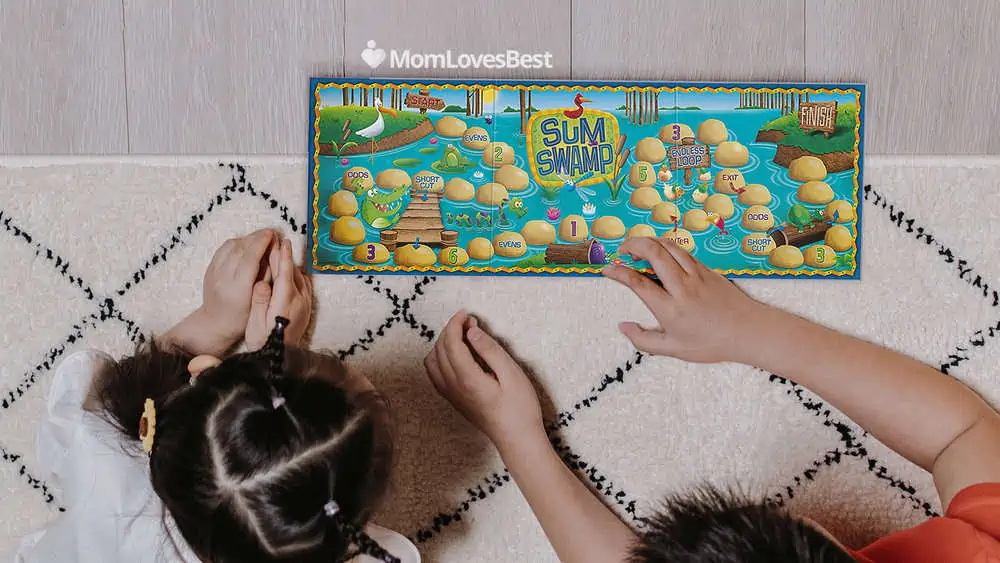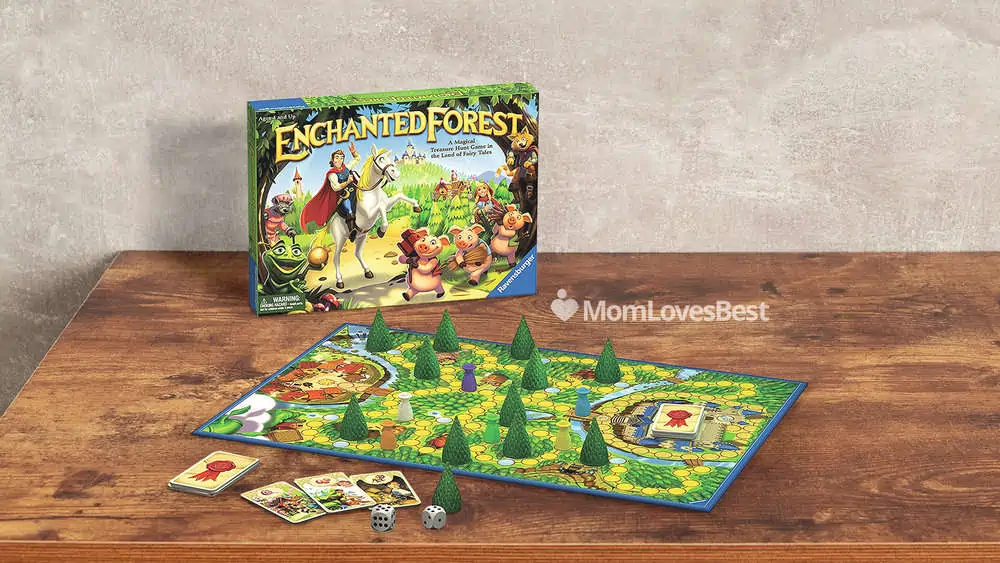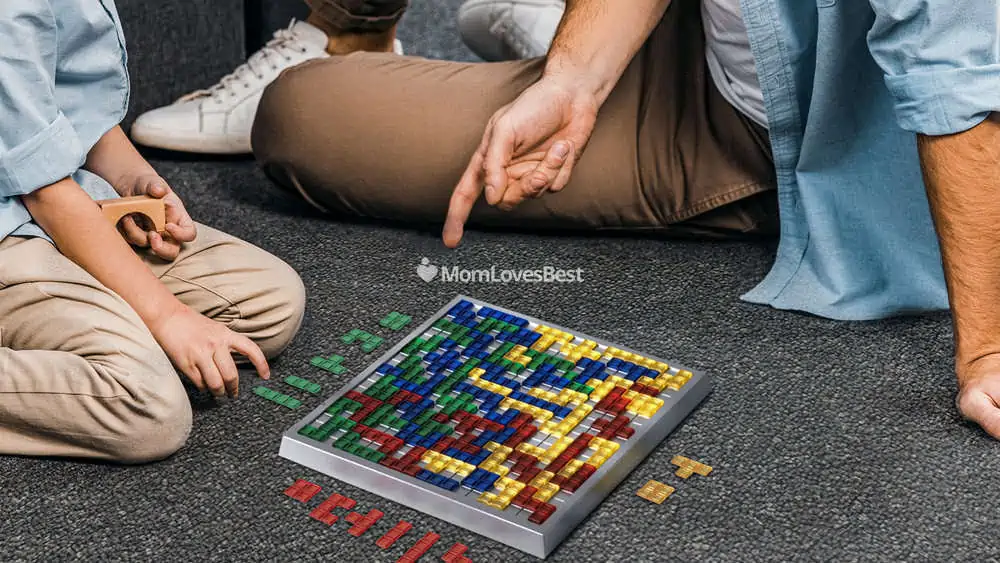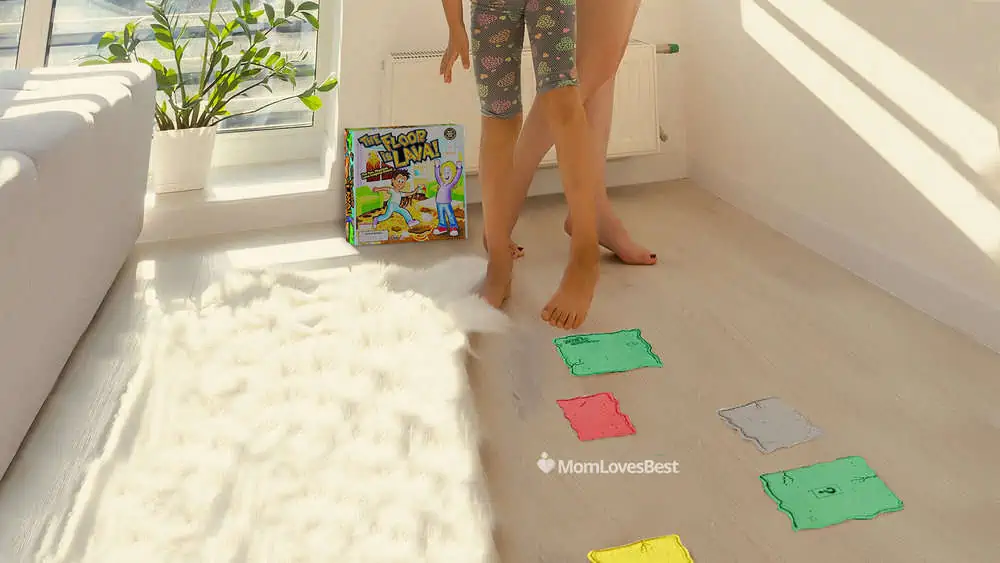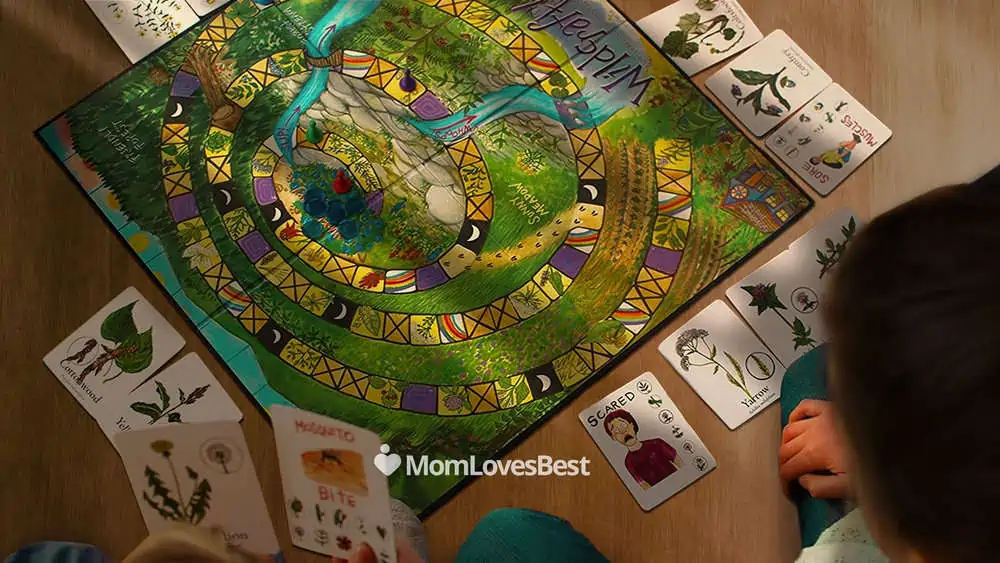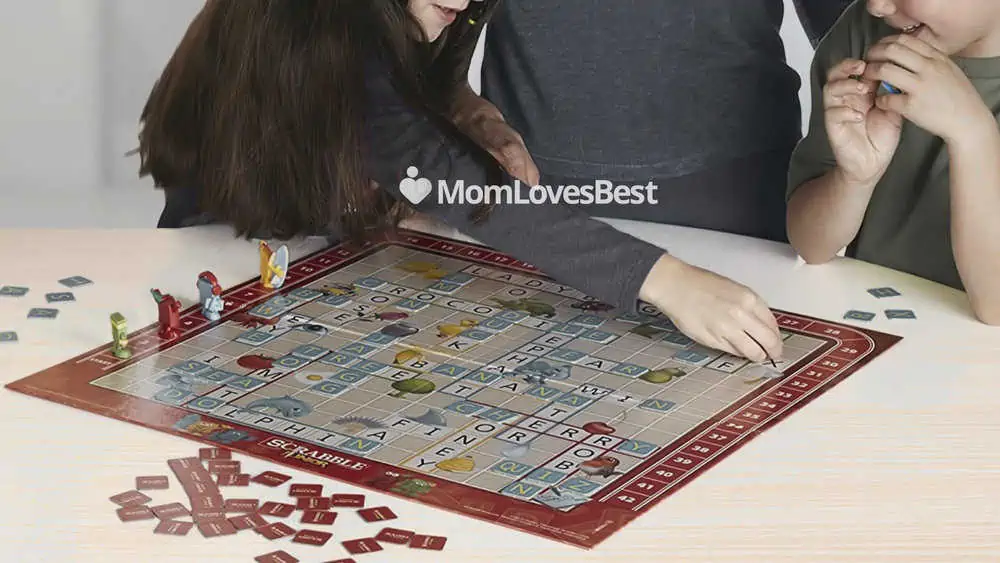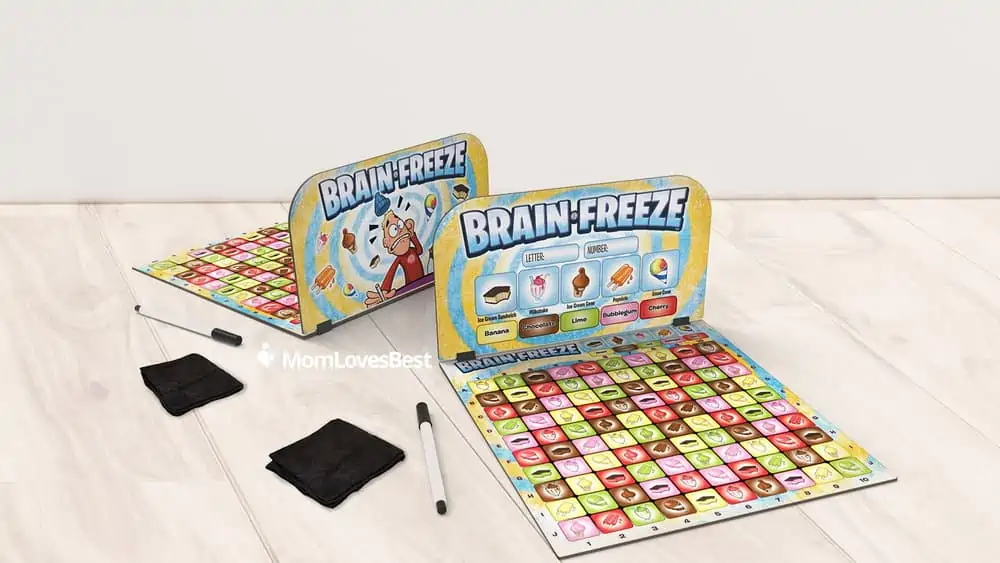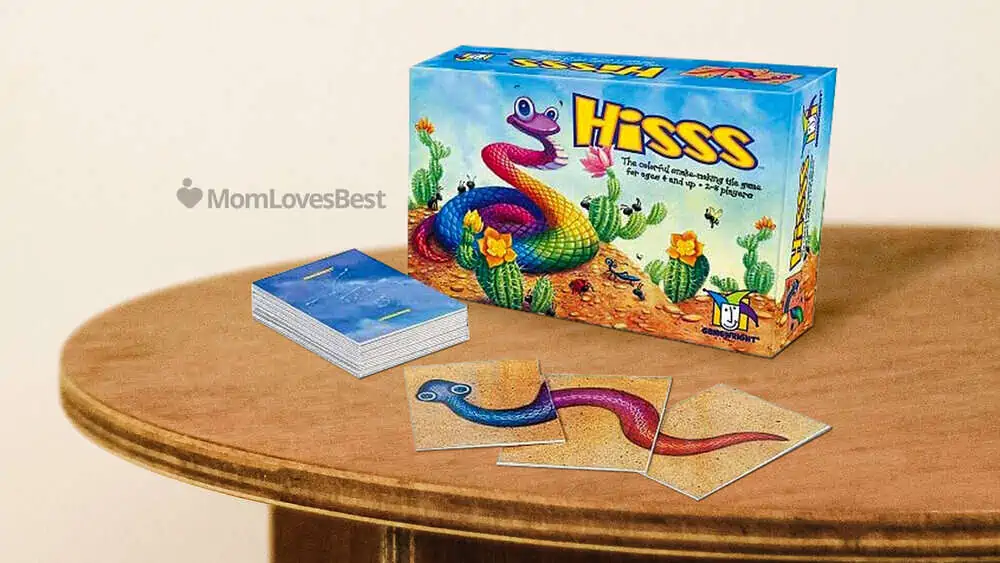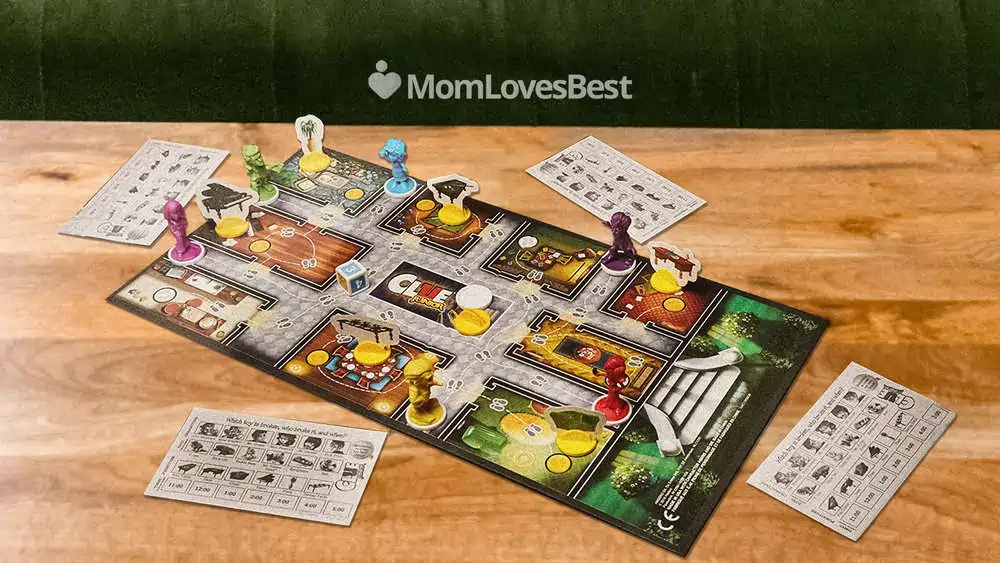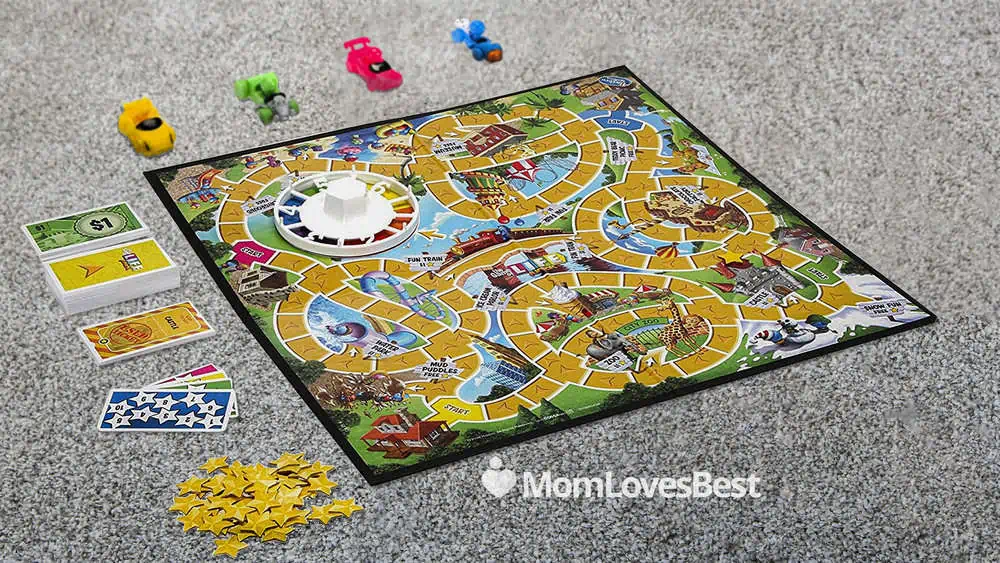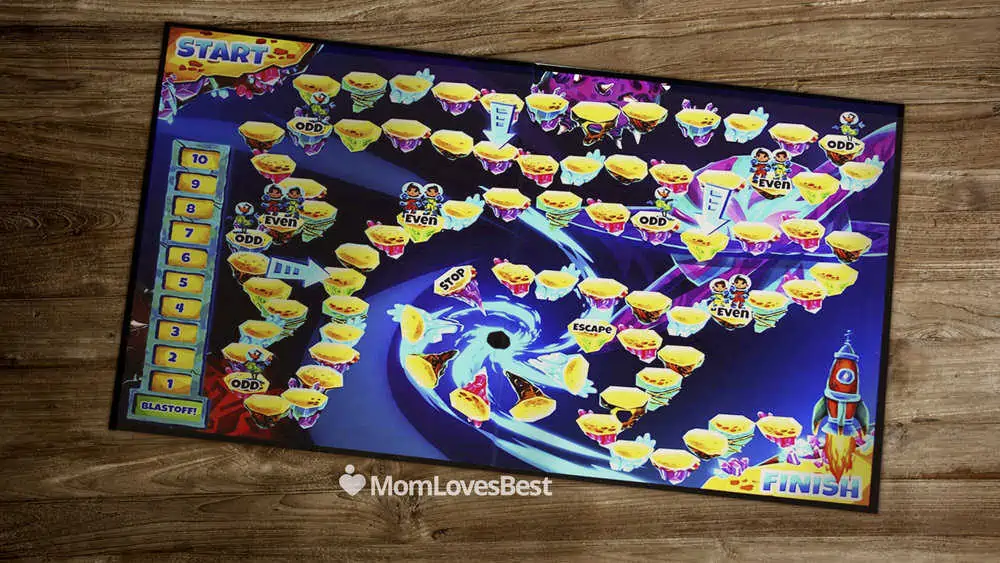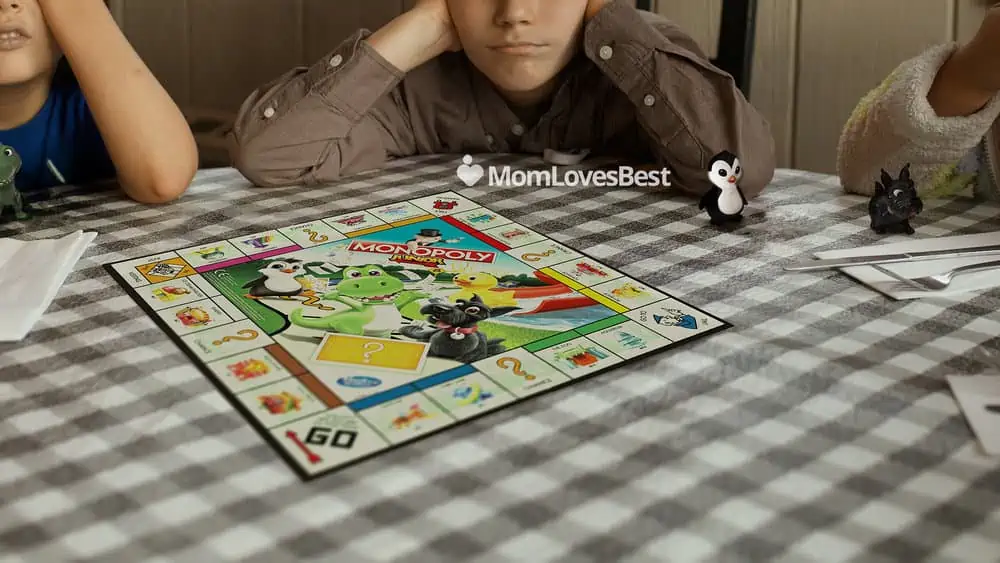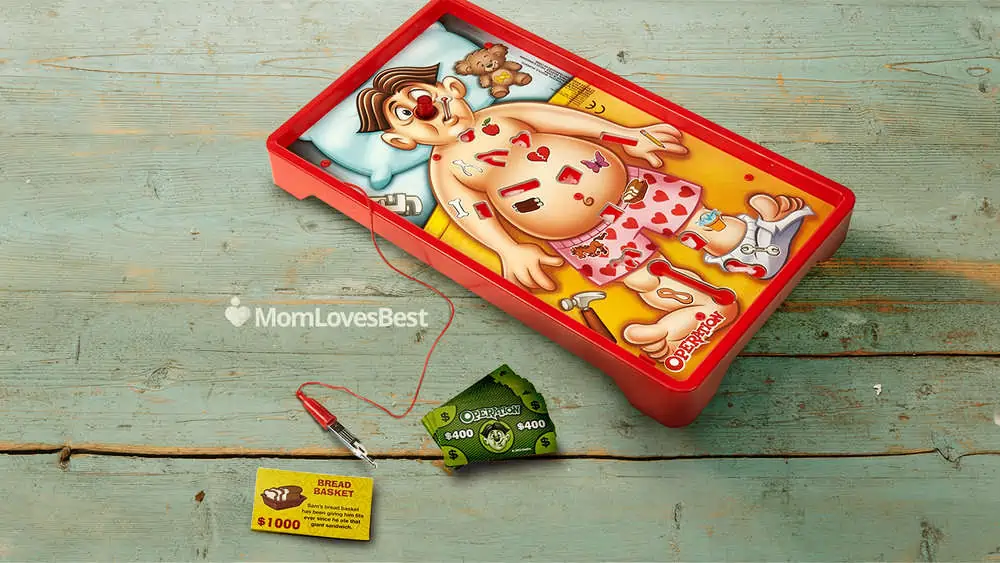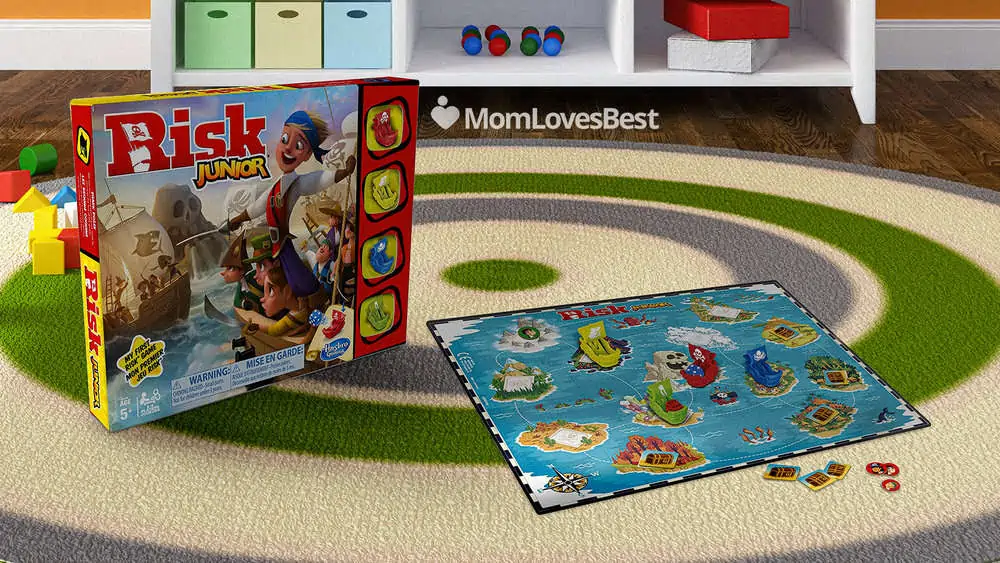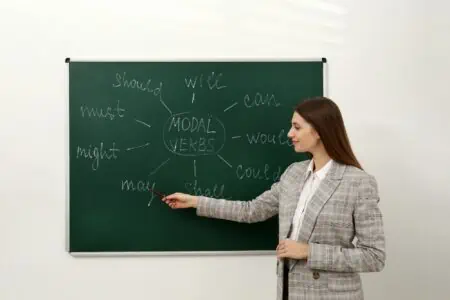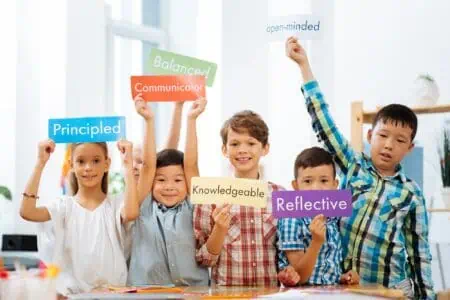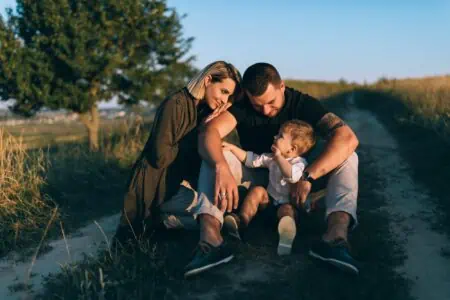We consulted with child development experts, analyzed gameplay mechanics, and played round after round with actual kindergartners. Here are the 20 best board games for 5-year-olds to spark joy and brainpower in your home.
- Fun and interactive
- Develops patience & memory
- Award-winning
- Educational game
- Fun & entertaining
- Combines strategy & luck
- Beautifully design
- Combo of skill & luck
- Multiple play modes
- Encourages collaboration
- Develops reasoning skills
- Can be played solo
- Can be played without adults
- Younger siblings can play
- Can be adapted for teams
- Strengthens memory
- Different experience every round
- No reading required
- Physical & dynamic
- Good party game
- Can be played outdoors
Can 5-Year-Olds Play Board Games?
Absolutely. By age five, most children have the attention span and cognitive ability to understand rules, take turns, and engage in basic strategy. While they still enjoy luck-based games, they are increasingly capable of making decisions that impact the game’s outcome.
Benefits of Board Games for 5-Year-Olds
Sitting down for a game night does more than just kill time; it builds essential life skills:
- Communication boosts: discussing rules and strategies expands vocabulary and helps children articulate their thoughts clearly.
- Social mastery: games teach patience while waiting for a turn, empathy for other players, and the difficult art of losing gracefully.
- Executive function: following multi-step directions and staying focused on the board strengthens attention spans needed for school.
- Family bonding: shared laughter and competition create a safe space for connection without screens.
How to Choose the Right Game
Not all games are created equal. Here is what to look for to ensure the box doesn’t just collect dust:
FAQs
Product Reviews
We evaluated these games based on replay value, component quality, and how easy they are for a kindergartner to learn. We also prioritized games that remain entertaining for parents, so family game night stays fun for everyone.
Rhino Hero
Best Stacking Board Game for 5-Year-Olds
Think of Rhino Hero as a more exciting version of building a house of cards. Players take turns placing walls and roof cards to construct a precarious tower. The twist comes when you have to move the wooden rhino figure from one level to another without knocking the whole structure down.
The rules are incredibly simple, making it accessible instantly. Certain roof cards force the next player to lose a turn or change direction, adding a light layer of strategy (and sabotage) that kids love.
If your child masters this version, you can upgrade to Rhino Hero Super Battle, which introduces taller towers and battles between animal heroes. It is a fantastic dexterity game that fits in a small box, perfect for taking to restaurants or on trips.
Pros
- Very short playtime.
- Teaches fine motor control.
- Compact and portable.
Cons
- Cards can get bent easily.
Product Specs
| Age Range | 5 years and older |
| Number of players | 2 to 5 |
| Game length | 5 to 15 minutes |
| Format | 3D, building |
Our Ratings
GoTrovo The Family Treasure Hunt Game
Best Treasure Hunt Board Game for 5-Year-Olds
If your 5-year-old struggles to sit still, GoTrovo is the solution. Instead of a board, this game turns your entire house or backyard into the play area. It provides clue cards, a treasure map, and gold coins to facilitate an exciting scavenger hunt.
Parents set up the trail using picture, word, or riddle clues, meaning it works for pre-readers and older siblings alike. The game ends with the discovery of a “gold bar” (which you can fill with a real treat).
It effectively gets kids moving and thinking simultaneously. Because you place the clues, every game is different, and you can control the difficulty and duration based on how much time you have.
Pros
- Encourages physical activity.
- Great for mixed ages.
- Highly replayable.
Cons
- Requires parent setup time.
Product Specs
| Age Range | 3 years and older |
| Number of players | 1 to 4 |
| Game length | 30 to 60 minutes |
| Format | Physical activity, strategy |
Our Ratings
Ticket to Ride First Journey
Best Map-Based Board Game for 5-Year-Olds
This junior version of the modern classic Ticket to Ride simplifies the rules perfectly for younger minds. Players collect train cards to claim railway routes connecting major cities across the United States and Canada.
The goal is to complete six “tickets” (routes) before anyone else. The plastic trains are chunky and satisfying to place, and the map features cute illustrations that help kids identify cities even if they cannot read the names yet.
It introduces basic geography and forward-thinking strategy without the cutthroat blocking that often happens in the adult version. It serves as an excellent gateway into more complex strategy games.
Pros
- High-quality components.
- Introduces geography.
- Fun for parents too.
Cons
- Routes can still be blocked accidentally.
Product Specs
| Age Range | 5 to 12 years |
| Number of players | 2 to 4 |
| Game length | 15 to 30 minutes |
| Format | Chance, strategy, planning |
Our Ratings
Dragon's Breath
Best Dexterity Board Game for 5-Year-Olds
Dragon’s Breath is a visual treat that combines tactical choices with fine motor skills. A clear cylinder is stacked with ice rings and filled with sparkling colored gems. Players take turns removing one ice ring at a time, causing the gems to spill out.
Before the spill, players choose a color token. You get to keep any gems of your color that fall, but the rest fall through holes in the board into the dragon’s cave. The player with the most gems at the end wins.
The best design feature is that the game box itself is the board, catching all the falling pieces and making cleanup instant. It is fast, exciting, and the “bling” factor of the gems is a huge hit.
Pros
- Fast setup and cleanup.
- Exciting physical mechanics.
- Good mix of luck and choice.
Cons
- Gems are small and easily lost.
Product Specs
| Age Range | 5 to 9 years |
| Number of players | 2 to 4 |
| Game length | 15 to 20 minutes |
| Format | 3D |
Our Ratings
Outfoxed!
Best Cooperative Board Game for 5-Year-Olds
Outfoxed! is essentially a cooperative version of Clue designed specifically for kids. A fox has stolen a pot pie, and players must work together to identify the culprit from a lineup of suspects before the fox escapes.
You roll dice to either reveal suspects or search for clues. The “clue decoder” is the highlight of the game; kids love sliding the token in to see if the thief is wearing a hat or glasses. It requires deductive reasoning and logic.
Because everyone wins or loses together, it eliminates the tears that often come with competitive games. It is brilliant for teaching logic and exclusion processes.
Pros
- Teaches logic and deduction.
- Cooperative play builds teamwork.
- Engaging decoder component.
Cons
- Can feel repetitive for adults.
Product Specs
| Age Range | 5 to 15 years |
| Number of players | 1 to 4 |
| Game length | 20 to 30 minutes |
| Format | Collaborative, deductive |
Our Ratings
Bugs in the Kitchen
Best Action Board Game for 5-Year-Olds
This game centers around a chaotic, vibrating robotic HexBug nano. The bug scuttles around a maze of utensils, and players must turn knives, forks, and spoons to direct the bug into their specific trap.
It is fast-paced and frantic. You roll a die to see which utensil you can rotate, trying to create a path for the bug to fall into your corner. The HexBug moves unpredictably, which leads to a lot of shouting and laughter.
The game is incredibly easy to learn, and the rounds are short. It is less about strategy and more about quick reactions and luck, which levels the playing field for younger players.
Pros
- Includes a real robotic bug.
- Very high energy.
- Easy for kids to play alone.
Cons
- The bug battery will eventually die.
- Can be overstimulating for some.
Product Specs
| Age Range | 5 to 12 years |
| Number of players | 2 to 4 |
| Game length | 15 to 20 minutes |
| Format | Fast response |
Our Ratings
Learning Resources Sum Swamp Game
Best Multiplayer Board Game for 5-Year-Olds
Sum Swamp manages to make basic math drills genuinely fun. Players navigate a swamp by rolling three dice: two number dice and one operation die (plus or minus). They create a math equation to determine how many spaces to move.
It reinforces simple addition and subtraction naturally during gameplay. Special spaces like “Evens” or “Odds” and a shortcut loop keep things interesting so it doesn’t feel like homework.
The swamp theme features cute critters like turtles and frogs, which appeals to 5-year-olds. It is an excellent tool for reinforcing what they are learning in kindergarten without forcing a worksheet on them.
Pros
- Directly supports school math skills.
- Cute and inviting theme.
- Simple enough for kids to play together.
Cons
- Limited replay value once math is mastered.
Product Specs
| Age Range | 5 years and older |
| Number of players | 2 to 4 |
| Game length | 20 to 30 minutes |
| Format | Basic mathematics, around the board |
Our Ratings
Enchanted Forest
Best Memory Board Game for 5-Year-Olds
In Enchanted Forest, players move through a magical wood to find hidden fairytale items like Cinderella’s slipper or a golden spindle. These items are hidden under the bases of plastic trees scattered across the board.
When you land on a tree, you peek underneath. You have to remember which item is under which tree so that when the King asks for a specific treasure, you can race to the castle to reveal its location.
It is a brilliant memory exercise that goes beyond simple matching cards. The blend of movement, strategy, and memory gives it a classic board game feel that rewards paying attention.
Pros
- Magical theme appeals to kids.
- Train memory and focus.
- High replay value.
Cons
- Game length can run long.
Product Specs
| Age Range | 5 to 12 years |
| Number of players | 2 to 6 |
| Game length | 30 to 60 minutes |
| Format | Around the board, memory |
Our Ratings
Blokus
Best Strategy Board Game for 5-Year-Olds
Blokus is an abstract strategy game that is deceptively simple. Players place Tetris-like plastic pieces on a grid, following one rule: each new piece must touch at least one other piece of the same color, but only at the corners.
While the box often suggests an older age range, 5-year-olds grasp the “corners only” concept quickly. It teaches incredible spatial reasoning and planning ahead.
For younger kids, you can modify the rules or play on teams. It is one of the few games where a child can genuinely beat an adult purely on strategy once they understand the geometry of the board.
Pros
- Excellent for spatial reasoning.
- No reading required.
- Sturdy plastic components.
Cons
- Board can get bumped easily.
Product Specs
| Age Range | 5 years to adult |
| Number of players | 2 to 4 |
| Game length | 20 to 30 minutes |
| Format | Tile laying, strategy |
Our Ratings
The Floor Is Lava
Best Physical Activity Board Game for 5-Year-Olds
This game capitalizes on the universal childhood imagination game. You scatter colored foam “stones” across the floor, and players spin a spinner to determine which color they must jump to next. The catch is that the floor is lava, and you cannot touch it.
As the game progresses, stones are removed, making the jumps more difficult. Action cards add silly challenges like “touch your toes,” testing balance and coordination.
It is perfect for rainy days when kids have excess energy to burn. It gets them off the couch and laughing, and the foam pieces are durable enough to withstand stomping feet.
Pros
- Burns physical energy.
- Great party game.
- Simple rules.
Cons
- Requires a large open space.
Product Specs
| Age Range | 5 to 10 years |
| Number of players | 2 to 6 |
| Game length | 10 to 45 minutes |
| Format | Physical activity, elimination |
Our Ratings
Wildcraft!
Best Nature-Based Board Game for 5-Year-Olds
Wildcraft! is a beautiful, cooperative game that teaches children about herbalism. Players trek up a mountain to pick huckleberries for Grandma, collecting cards of real medicinal plants along the way to cure ailments like bee stings or scraped knees.
The game is entirely cooperative; players can share their healing cards to help each other make it up and down the mountain before nightfall.
The illustrations are accurate to nature, meaning kids actually learn to identify plants like plantain, chamomile, and dandelion. It is gentle, educational, and produced with eco-friendly materials.
Pros
- Teaches real plant identification.
- No reading necessary (uses icons).
- Eco-friendly production.
Cons
- Gameplay can feel slow to adults.
Product Specs
| Age Range | 5 years and older |
| Number of players | 1 to 4 |
| Game length | 45 to 60 minutes |
| Format | Collaborative, collection |
Scrabble Junior
Best Spelling Board Game for 5-Year-Olds
Scrabble Junior grows with your child thanks to its double-sided board. For 5-year-olds, the “Words and Pictures” side features pre-printed words. Kids simply match their letter tiles to the letters on the board, earning points for completing words.
This builds letter recognition and familiarity with spelling without the pressure of creating words from scratch. Once they are older, flip the board over for a grid that allows for standard (but simplified) Scrabble play.
It transforms a potentially frustrating adult game into an accessible matching activity. It is a classroom staple for a reason.
Pros
- Two games in one box.
- Reinforces alphabet skills.
- No scorekeeping math required on Level 1.
Cons
- Tiles can slide around easily.
Product Specs
| Age Range | 4 years and older |
| Number of players | 2 to 4 |
| Game length | 20 to 45 minutes |
| Format | Spelling, race around the board. |
Brain Freeze
Best Two-Player Board Game for 5-Year-Olds
Brain Freeze is essentially a kid-friendly logic puzzle similar to Mastermind or Battleship. Two players secretly choose a sweet treat (ice cream, cake, etc.) and its location on a grid.
Through a series of questions, you try to deduce what your opponent has chosen and where it is hidden. Players mark their deductions on wipe-clean boards with dry-erase markers.
It introduces the concept of elimination and logical questioning in a low-stakes, tasty-themed environment. It is fantastic for quiet, head-to-head play.
Pros
- Great for travel.
- Teaches deductive logic.
- Reusable boards mean no waste.
Cons
- Learning curve for the logic aspect.
Product Specs
| Age Range | 5 years and older |
| Number of players | 2 |
| Game length | 10 to 20 minutes |
| Format | Deduction, logic |
Gamewright Hisss
Best Card-Based Board Game for 5-Year-Olds
Hisss is a color-matching game that requires zero setup. The deck consists of snake parts: heads, tails, and body segments in various colors. Players draw a card and try to match colors to build a snake.
A snake is complete when it has a head and a tail. The player who finishes the snake gets to keep it. The strategy is light, but the visual matching is engaging for young kids.
It’s portable, cheap, and plays quickly. It also allows for open-ended play where kids can just build massive, rainbow-colored reptiles without keeping score.
Pros
- Portable card game.
- Teaches color matching.
- Fast gameplay.
Cons
- Very simple; older kids may get bored.
Product Specs
| Age Range | 4 to 10 years |
| Number of players | 2 to 5 |
| Game length | 15 minutes |
| Format | Chance, strategy, card laying |
Clue Junior
Best Deduction Board Game for 5-Year-Olds
Forget the candlestick and the conservatory; Clue Junior focuses on playground mysteries like who broke the toy or who ate the cake. The mechanics remain true to the original but are streamlined for younger players.
Players roll dice to move characters and look under playing pieces to reveal clues. As they see what isn’t the answer, they mark it off in their detective notepad.
It feels grown-up because of the secrecy and the notepad, which 5-year-olds love. It requires genuine thinking to piece the information together, making solving the case feel like a real accomplishment.
Pros
- Non-violent themes.
- Engaging detective work.
- Good introduction to logic.
Cons
- Setup takes a few minutes.
Product Specs
| Age Range | 5 to 12 years |
| Number of players | 2 to 6 |
| Game length | 30 minutes |
| Format | Deductive, race to the solution |
The Game of Life Junior
Best Family Board Game for 5-Year-Olds
This junior version takes players on a fun-filled day of vacation rather than a whole life of mortgage payments. Players choose a car and zip around the board visiting attractions like the zoo or the beach.
The game uses simple math and decision-making. Action cards add a charades element, asking kids to act out things like lions or airplanes to earn stars. The first to collect 10 stars wins.
It is much faster than the adult version and keeps the tone light and adventurous. The inclusion of mini-games and acting keeps kids engaged when it is not their turn.
Pros
- Fun, 3D car pieces.
- Incorporates active charades.
- Easy counting practice.
Cons
- Spinner can be stiff.
Product Specs
| Age Range | 5 to 12 years |
| Number of players | 2 to 4 |
| Game length | 15 to 30 minutes |
| Format | Race to the finish, charades |
Sums In Space
Best Counting Board Game for 5-Year-Olds
Sums In Space is an adventure game that doubles as math practice. Players act as space explorers trying to escape a planet before a black hole catches them. To move, they must roll dice and perform basic addition or subtraction.
The brilliance of this game is that it offers both competitive and cooperative modes. You can race against each other, or team up to beat the black hole.
It targets the exact math skills kids are learning in kindergarten and first grade. The space theme helps distract from the fact that they are essentially doing rapid-fire math problems.
Pros
- Both cooperative and competitive modes.
- Strong educational value.
- Covers addition and subtraction.
Cons
- Components are basic cardboard.
Product Specs
| Age Range | 5 to 7 years |
| Number of players | 2 to 4 |
| Game length | 30 to 60 minutes |
| Format | Race to the finish, against the clock, math |
Monopoly Junior
Best Budget Board Game for 5-Year-Olds
Monopoly Junior fixes the biggest problem of the original: the length. This version plays quickly on a smaller board with kid-friendly properties like a Pizza Parlor or an Ice Cream Shop.
The money is simplified to single units, making the math manageable for 5-year-olds (everything costs $1, $2, etc.). Players race to buy properties and collect rent, and the game ends the moment one player goes bankrupt.
It introduces the concepts of budgeting and paying rent without the agonizing 4-hour playtime. The tokens are adorable, featuring characters like a cat, dog, and boat.
Pros
- Quick playtime compared to original.
- Simple math practice.
- Familiar mechanics for parents.
Cons
- Luck-based; little strategy involved.
Product Specs
| Age Range | 5 to 12 years |
| Number of players | 2 to 4 |
| Game length | 45 minutes |
| Format | Buy and sell, elimination |
Operation
Best Electronic Board Game for 5-Year-Olds
The buzzing red nose of Cavity Sam has terrified and delighted children for generations. Operation remains the king of fine motor skill games. Players use metal tweezers to remove plastic ailments like a “charley horse” or “butterflies in the stomach” without touching the metal edges.
It builds hand-eye coordination and patience like no other game. The instant feedback of the buzzer creates high stakes and tension that kids find hilarious.
While frustrating for some, it is a classic for a reason. There are various themed versions available now, from Star Wars to Finding Dory, if the medical theme doesn’t appeal.
Pros
- Excellent fine motor practice.
- Can be played solo.
- Funny sound effects.
Cons
- Small pieces are easily lost.
Product Specs
| Age Range | 5 years and older |
| Number of players | 1 or more |
| Game length | 10 minutes |
| Format | Steady hand, piece removal |
Risk Junior
Best Determined By Chance Board Game for 5-Year-Olds
Risk is usually associated with hours of global warfare, but Risk Junior changes the script entirely. With a pirate theme, players launch tokens from small plastic catapults (boats) to conquer islands.
It removes the complex dice strategy of the original and replaces it with dexterity and luck. If you launch your die onto an island, you claim it. The player with the most treasure and islands wins.
It is a chaotic, physical game that feels more like a toy than a serious strategy board game, which is exactly why 5-year-olds enjoy it. It levels the playing field so kids can easily beat adults.
Pros
- Fun pirate catapult mechanic.
- Simple area control rules.
- High engagement.
Cons
- More of a toy than a strategy game.
Product Specs
| Age Range | 5 to 10 years |
| Number of players | 2 to 4 |
| Game length | 15 to 60 minutes |
| Game type | Travel around the board |
| Product | Best | Age Range | No of players | Game length | Format |
| Rhino Hero | Stacking Game | 5 years & older | 2 to 5 | 5 to 15 min | 3D, building |
| GoTrovo Treasure Hunt | Treasure Hunt | 5 years & older | 1 to 4 | 30 to 60 min | Physical activity, strategy |
| Ticket to Ride First Journey | Map-Based | 5 to 12 years | 2 to 4 | 15 to 30 min | Chance, strategy, planning |
| Dragon’s Breath | Dexterity Game | 5 to 9 years | 2 to 4 | 15 to 20 min | 3D |
| Outfoxed! | Cooperative Game | 5 to 15 years | 1 to 4 | 20 to 30 min | Collaborative, deductive |
| Bugs in the Kitchen | Action Game | 5 to 12 years | 2 to 4 | 15 to 20 min | Fast response |
| Sum Swamp Game | Multiplayer | 5 years & older | 2 to 4 | 20 to 30 min | Basic mathematics, around the board |
| Enchanted Forest | Memory Game | 5 to 12 years | 2 to 6 | 30 to 60 min | Around the board, memory |
| Blokus | Strategy Game | 5 years to adult | 2 to 4 | 20 to 30 min | Tile laying, strategy |
| The Floor Is Lava | Physical Activity | 5 to 10 years | 2 to 6 | 10 to 45 min | Physical activity, elimination |
| Wildcraft! | Nature-Based | 5 years & older | 1 to 4 | 45 to 60 min | Collaborative, collection |
| Scrabble Junior | Spelling Game | 4 years & older | 2 to 4 | 20 to 45 min | Spelling, race around the board. |
| Brain Freeze | Two-Player | 5 years & older | 2 | 10 to 20 min | Deduction, logic |
| Gamewright Hisss | Card-Based | 4 to 10 years | 2 to 5 | 15 min | Chance, strategy, card laying |
| Clue Junior | Deduction Game | 5 to 12 years | 2 to 6 | 30 min | Deductive, race to the solution |
| The Game of Life Junior | Family Game | 5 to 12 years | 2 to 4 | 15 to 30 min | Race to the finish, charades |
| Sums In Space | Counting Game | 5 to 7 years | 2 to 4 | 30 to 60 min | Race to the finish, against the clock, math |
| Monopoly Junior | Budget Pick | 5 to 12 years | 2 to 4 | 45 min | Buy and sell, elimination |
| Operation | Electronic Game | 5 years & older | 1 or more | 10 min |
Steady hand, piece removal
|
| Risk Junior | Determined By Chance | 5 to 10 years | 2 to 4 | 15 to 60 min |
Travel around the board
|
Ready to Play?
Board games are more than just a way to pass a rainy afternoon; they are tools for connection, learning, and laughter. Whether you are stacking rhinos, solving mysteries, or navigating swamps, the best game is the one that gets your family sitting around the table together.
Pick a game from this list that matches your child’s personality, clear the table, and get ready to make some memories.
